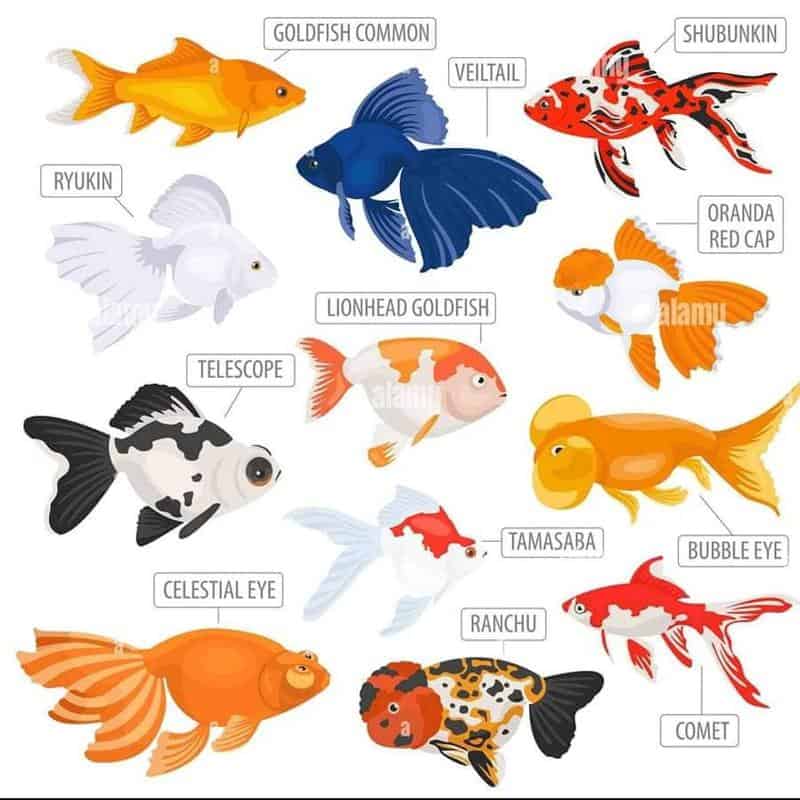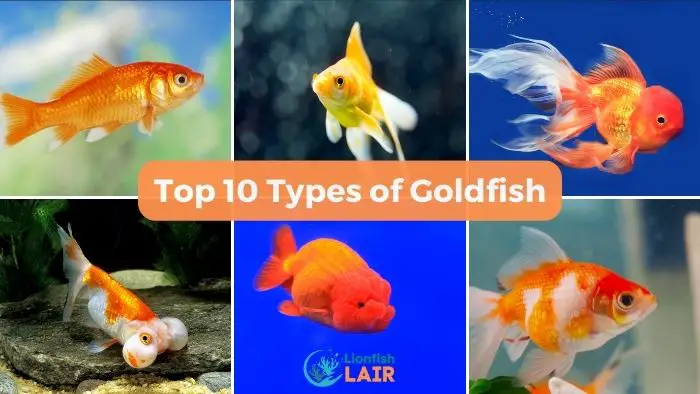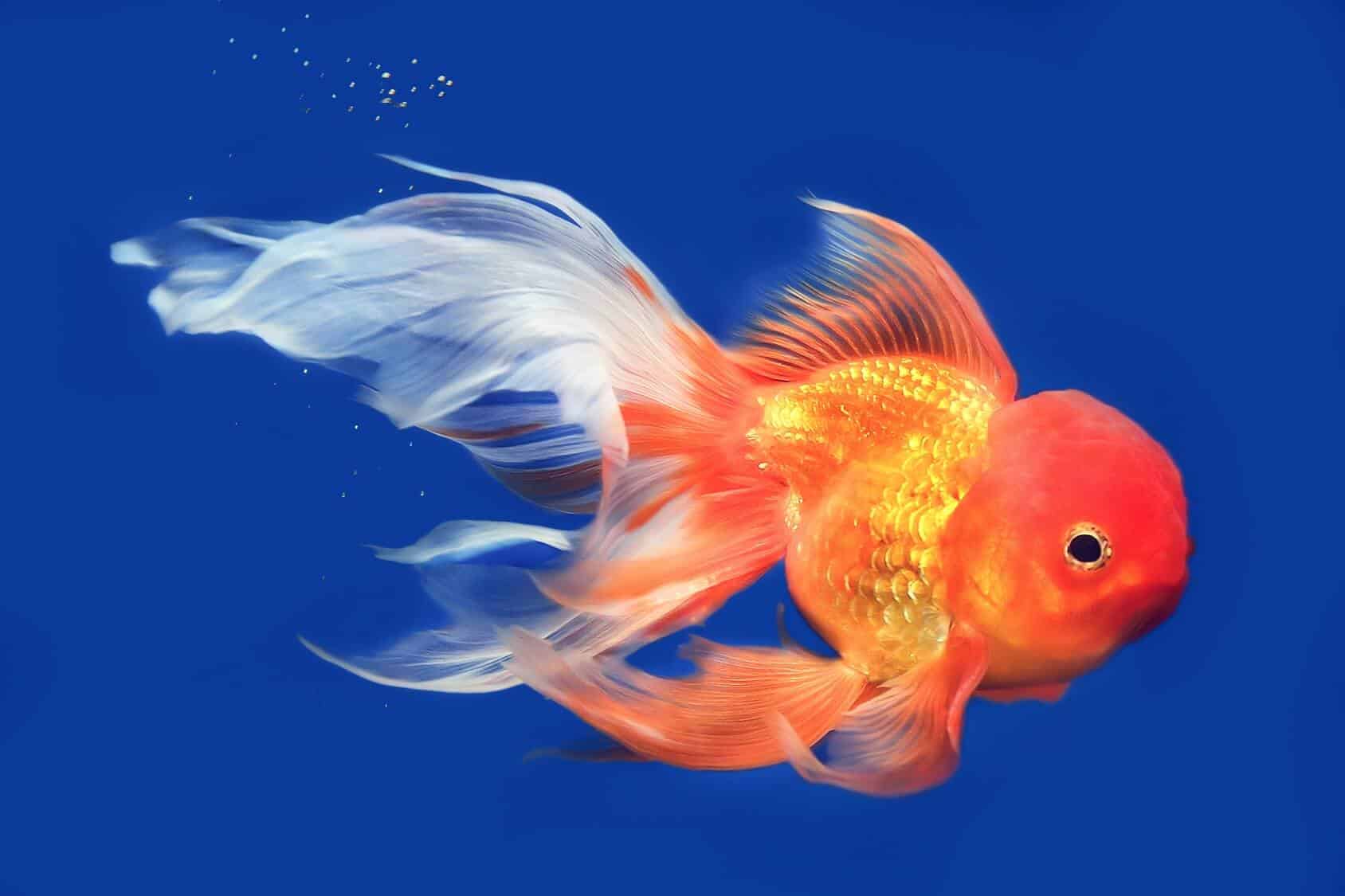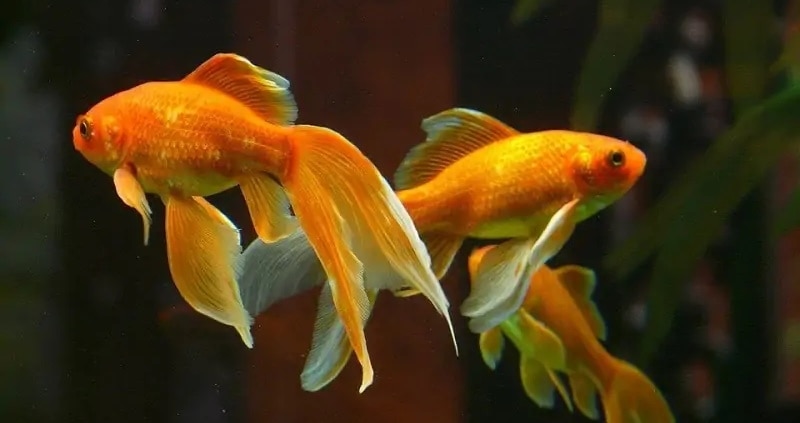Let's talk about the different types of goldfish and what makes each one unique. From the majestic Oranda with its fancy head growth, to the elegant and slender Comet, there's a goldfish for every taste. Some goldfish have long flowing fins, while others have shorter, more compact bodies. Each type has its own set of care requirements and characteristics, so it's important to choose the one that aligns with your preferences and lifestyle.
In the upcoming article, we'll delve deeper into each type of goldfish and discuss their specific needs and care tips. We'll talk about their physical appearances, sizes, and temperaments, and explore why some types may be better suited for beginners, while others are more suitable for experienced goldfish keepers. So, if you're looking for expert advice on which type of goldfish is the best fit for you, stick around because we've got you covered!

This image is property of www.acaquarium.com.
Understanding Goldfish Varieties
When it comes to choosing a goldfish as a pet, one might be overwhelmed by the endless options available. Goldfish come in a wide variety of shapes, sizes, and colors, each with its own unique characteristics. In this article, we will delve into the different goldfish varieties and explore the factors to consider when choosing the best goldfish for you.
Common Goldfish
The common goldfish is often the first variety that comes to mind when thinking about these beloved aquatic pets. Known for their bright orange color and sleek body shape, common goldfish are a popular choice for beginners. They are incredibly hardy and can adapt to various environmental conditions. With proper care and maintenance, they can grow up to a foot in length.
Comet Goldfish
Similar in appearance to the common goldfish, comet goldfish have longer, more slender bodies and trailing fins. They get their name from their fast and graceful swimming pattern, resembling that of a shooting comet across the sky. Comet goldfish come in various colors, including metallic red, orange, yellow, and white. They are often recommended for outdoor ponds due to their active nature.
Shubunkin Goldfish
If you're looking for a goldfish with an eye-catching look, the shubunkin goldfish is an excellent choice. These fish have a unique calico pattern, consisting of a mix of red, blue, black, and white colors. The shubunkin goldfish are known for their graceful swimming style and can grow up to 9 inches in length. They are well-suited for both indoor aquariums and outdoor ponds.
Fantail Goldfish
With its charming fan-shaped tail, the fantail goldfish is a favorite among goldfish enthusiasts. These fish have a rounded and chubby body, accentuated by their double tail fin. Fantail goldfish are available in various color variations, including red, black, orange, and white. They are generally peaceful and can thrive in both large aquariums and outdoor ponds.
Oranda Goldfish
One of the most distinctive goldfish varieties is the oranda goldfish, known for its prominent hood or wen on its head. This fleshy growth gives the oranda a regal and majestic appearance. They come in a variety of colors, including red, orange, black, and white. Due to their delicate head growth, oranda goldfish require extra care and a well-maintained aquarium.
Ryukin Goldfish
With its short, sturdy body and bold coloring, the ryukin goldfish is a captivating choice for goldfish enthusiasts. They are characterized by a pronounced hump behind their head, which adds to their unique appearance. Ryukin goldfish come in a range of colors, including red, white, calico, and solid metallic shades. They are hardy and can tolerate a wide range of water conditions.
Black Moor Goldfish
The black moor goldfish is known for its striking jet-black color and protruding eyes. It has a round body shape and flowing fins, making it a visually stunning addition to any aquarium. While black moors are generally peaceful and friendly, their eyesight can be impaired due to their telescope-like eyes, making it necessary to provide them with a well-decorated and obstacle-free environment.
Telescope Goldfish
As the name suggests, the telescope goldfish has protruding, telescope-like eyes that give them a unique and endearing appearance. They have a round and chubby body and come in a variety of colors, including black, red, orange, and white. Telescope goldfish require a well-filtered aquarium with plenty of space to swim due to their impaired eyesight.
Bubble Eye Goldfish
If you're looking for a goldfish with a truly unique characteristic, the bubble eye goldfish might be the perfect choice. This variety has fluid-filled sacs beneath its eyes, which resemble bubbles. These bubbles are delicate and require extra care to ensure they don't get injured or infected. Bubble eye goldfish are generally slow-moving and peaceful, making them suitable for smaller aquariums.
Lionhead Goldfish
The lionhead goldfish is a captivating variety known for its prominent growth on its head resembling a lion's mane. They have a rounded body shape and come in a range of colors, including red, orange, and black. Lionhead goldfish require a well-maintained and clean aquarium, as their head growth can attract dirt and debris easily.
Factors to Consider in Choosing the Best Goldfish
Now that you're familiar with the different goldfish varieties available, let's discuss the factors you should consider when choosing the best goldfish for you.
Tank Size and Space Requirements
Goldfish, regardless of the variety, require an adequately-sized tank to grow and thrive. A common rule of thumb is to provide 20 gallons of water for the first goldfish and an additional 10 gallons for each additional fish. However, some goldfish varieties, such as the comet and shubunkin, are more active and may require a larger space, such as an outdoor pond.
Water Quality and Filtration
Maintaining optimal water quality is crucial for the health and well-being of your goldfish. Invest in a good-quality filtration system to ensure the water is properly circulated and pollutants are removed. Regular water testing and water changes are essential for keeping the water parameters within the acceptable range for goldfish.
Temperature and Environmental Considerations
Goldfish are coldwater fish and prefer temperatures between 65-75°F (18-24°C). Ensure that the aquarium is placed away from direct sunlight, as it can lead to temperature fluctuations and excessive algae growth. Additionally, consider the natural habitat requirements of the goldfish variety you choose when deciding whether to keep them in an indoor aquarium or an outdoor pond.
Compatibility with Other Fish Species
When selecting your goldfish, it's important to consider their compatibility with other fish species. Goldfish are generally peaceful, but they have a tendency to nibble on long-finned fish. Keep them with fish that can tolerate their cooler water requirements and can withstand the occasional nibbling.
Feeding Habits and Nutritional Requirements
Different goldfish varieties may have slightly different feeding habits and nutritional requirements. Consult with your local pet store or a goldfish expert to understand the specific dietary needs of the goldfish variety you choose. A balanced diet of high-quality pellets, supplemented with occasional treats like freeze-dried or live foods, will help maintain your goldfish's health and colors.

This image is property of lionfishlair.com.
Characteristics and Unique Features of Different Goldfish Varieties
Each goldfish variety comes with its own set of characteristics and unique features. Understanding these attributes can help you make an informed decision when choosing the best goldfish for your aquarium.
Physical Appearance
Goldfish varieties vary greatly in terms of physical appearance. From sleek and slender bodies to rounded and chubby forms, goldfish offer a wide range of shapes to choose from. Consider the overall shape, size, and coloration of the goldfish variety you prefer.
Size and Growth Potential
Goldfish can grow at different rates, with some varieties reaching smaller sizes, while others grow to become substantially larger. Take into account the growth potential of the goldfish variety you choose and ensure you have adequate space to accommodate their eventual size.
Coloration and Patterns
The color palette of goldfish is incredibly diverse. From bright oranges and reds to calico patterns with a mix of colors, goldfish can be chosen based on personal preferences. Pay attention to the coloration and patterns of the goldfish variety you're interested in, as they can dramatically enhance the aesthetic appeal of your aquarium.
Tail Shapes and Fins
The shape and size of a goldfish's tail and fins can greatly impact its swimming pattern and overall appearance. From the graceful, flowing fins of fantail goldfish to the double-lobed tails of ryukin goldfish, consider the tail shape and fin characteristics that most appeal to you.
Eyes and Facial Characteristics
Some goldfish varieties have unique eye and facial features that make them stand out. From the protruding eyes of telescope goldfish to the head growth or hoods seen in oranda and lionhead goldfish, take note of these distinctive facial characteristics when choosing your goldfish.
The Popular Common Goldfish
Let's start our exploration of the different goldfish varieties with the popular and commonly known common goldfish.
Overview of Common Goldfish
The common goldfish, also known as the American goldfish, is a classic choice for beginners due to its hardiness and adaptability. These goldfish have a streamlined body shape and are typically bright orange in color. They can grow up to a foot in length and are known for their peaceful nature, making them suitable for both indoor aquariums and outdoor ponds.
Characteristics and Physical Features
The common goldfish has a sturdy body with a single tail fin. Their scales are typically orange, but variations with red and white scales are also present. They have a well-defined mouth and small eyes. Common goldfish can live for several years if proper care and tank conditions are provided.
Pros and Cons of Keeping Common Goldfish
One of the main advantages of keeping common goldfish is their hardiness. They can tolerate a wide range of water conditions and are forgiving when it comes to minor fluctuations in temperature and water quality. Common goldfish are also relatively easy to care for and are a budget-friendly option for those starting their goldfish journey.
However, common goldfish can grow quite large, reaching up to a foot in length. This means they require a spacious tank or pond to accommodate their eventual size. Additionally, their active nature may cause them to create more waste compared to other goldfish varieties, necessitating a robust filtration system and regular water changes.

This image is property of www.fishkeepingworld.com.
The Active and Graceful Comet Goldfish
Next on our list is the elegant and active comet goldfish.
Overview of Comet Goldfish
The comet goldfish is named for its beautiful swimming pattern, which resembles a shooting comet across the sky. They have a more elongated body compared to the common goldfish, with flowing fins and a slender appearance. Comet goldfish are highly active and graceful swimmers, making them a popular choice for larger aquariums and outdoor ponds.
Distinctive Appearance and Features
Comet goldfish are available in various colors, including metallic red, orange, yellow, and white. They can have a single tail fin or, in some cases, the tail fins can be divided into multiple lobes. This gives them a unique and eye-catching appearance. Comet goldfish can grow up to 10-12 inches in length, requiring ample space to exhibit their lively swimming behavior.
Advantages and Drawbacks of Keeping Comet Goldfish
One of the main advantages of keeping comet goldfish is their active nature. These fish love to explore their surroundings and spend their time swimming gracefully throughout the tank or pond. They are generally peaceful and can coexist with other coldwater fish species.
However, due to their more active lifestyle, comet goldfish may require a larger space compared to other goldfish varieties. If kept in an indoor aquarium, a tank with a minimum capacity of 30 gallons is recommended to allow for ample swimming space. Additionally, their flowing fins may be prone to damage if kept with fish that are known to nip at fins.
The Varied Colors of Shubunkin Goldfish
Moving on, let's explore the stunning and colorful shubunkin goldfish.
Overview of Shubunkin Goldfish
The shubunkin goldfish, also known as the calico goldfish, is loved for its striking and vibrant color patterns. They have a body shape similar to that of the common goldfish, with a laterally compressed form. Shubunkin goldfish are well-suited for both indoor aquariums and outdoor ponds and can bring a burst of color to any aquatic setting.
Color Patterns and Characteristics
Shubunkin goldfish have a base color that can range from metallic blue to gray or brown. Over this base color, they display splashes of red, orange, black, and white, creating a beautiful and varied pattern. Every shubunkin goldfish is unique, with no two having the exact same coloration.
Benefits and Considerations of Keeping Shubunkin Goldfish
One of the main benefits of keeping shubunkin goldfish is their stunning and ever-changing color patterns. These fish can bring life and vibrancy to any aquarium or pond. Shubunkin goldfish are generally hardy and can adapt to different water conditions. They are a popular choice for outdoor ponds, where their active swimming style can be enjoyed.
However, it's important to note that shubunkin goldfish require adequate space to reach their full potential. They can grow up to 9 inches in length, and as such, a larger tank or pond is recommended to accommodate their growth. Additionally, their vibrant colors may fade if exposed to direct sunlight or improper water conditions.

This image is property of aquariumstoredepot.com.
The Elegant and Fancy Fantail Goldfish
Let's now turn our attention to the elegant and fancy fantail goldfish.
Overview of Fantail Goldfish
Fantail goldfish are known for their charming appearance, characterized by a rounded and chubby body shape and a double tail fin. They are a popular choice among goldfish enthusiasts due to their graceful swimming behavior and captivating features. Fantail goldfish are suitable for both indoor aquariums and outdoor ponds, provided the necessary space is provided.
Physical Attributes and Tail Shape
The most striking feature of fantail goldfish is their double tail fin, which gives them a fan-like appearance. This tail shape enhances their swimming pattern, making them appear even more graceful. Fantail goldfish can come in a variety of colors, including red, black, orange, and white. Their rounded body shape adds to their overall charm.
Pros and Cons of Keeping Fantail Goldfish
One of the main advantages of keeping fantail goldfish is their captivating appearance. With their flowing double tail and rounded body shape, they are a visual delight to watch. Fantail goldfish are generally peaceful and can coexist with other similar-sized fish. They are well-suited for indoor aquariums and can be kept in smaller tanks compared to some other goldfish varieties.
However, it's important to note that fantail goldfish are prone to certain health issues. Due to their rounded body shape, they can be more susceptible to swim bladder problems. Providing a well-balanced diet and ensuring proper water conditions can help mitigate these issues. Additionally, they may require more space compared to other fancy goldfish varieties due to their desire for ample swimming space.
The Majestic Oranda Goldfish
Let's move on to the majestic oranda goldfish, known for its unique and regal appearance.
Overview of Oranda Goldfish
Oranda goldfish are highly sought-after for their prominent head growth or wen. This fleshy growth on the top of their head gives them a majestic and distinguished look. Oranda goldfish are available in a variety of colors, including red, orange, black, and white. However, their head growth requires extra care and attention to ensure their health and well-being.
Head Growth and Unique Appearance
The most distinctive feature of oranda goldfish is their head growth. The wen can vary in size and shape, ranging from a small hood to a large, flowing growth that covers the entire head. The oranda goldfish's body shape is similar to that of the fantail goldfish, with a rounded and chubby physique.
Advantages and Limitations of Keeping Oranda Goldfish
One significant advantage of keeping oranda goldfish is their impressive appearance. The head growth or wen is a unique characteristic that sets them apart from other goldfish varieties. Oranda goldfish are generally peaceful and can coexist with other fish species. They are a popular choice for indoor aquariums and can be the centerpiece of any aquatic display.
However, it's crucial to consider the extra care requirements of oranda goldfish. The head growth is delicate and prone to injury or infection. It's essential to provide a well-maintained aquarium with clean water conditions to ensure the health of the wen. Additionally, oranda goldfish may be more susceptible to swim bladder issues, so a well-balanced diet and regular feeding schedule are vital.

This image is property of petkeen.com.
The Robust and Curious Ryukin Goldfish
Next, let's dive into the robust and curious ryukin goldfish.
Overview of Ryukin Goldfish
Ryukin goldfish are known for their distinctive body shape and bold coloration. They have a rounded and compact body, with a pronounced hump behind their head. Ryukin goldfish are characterized by their lively and inquisitive nature, constantly exploring their surroundings and displaying their unique features.
Body Shape and Distinctive Characteristics
The most striking feature of the ryukin goldfish is the hump or arch behind its head. This hump, known as the dorsal prominence, adds to their regal and majestic appearance. Ryukin goldfish have flowing fins and a variety of color patterns, including solid metallic shades, red, white, and calico.
Benefits and Considerations of Keeping Ryukin Goldfish
One of the main benefits of keeping ryukin goldfish is their robustness and hardiness. They are known for their ability to tolerate a wide range of water conditions, making them suitable for both beginners and experienced fishkeepers. Ryukin goldfish are relatively active and enjoy exploring their environment. They are well-suited for both indoor aquariums and outdoor ponds.
However, it's important to note that ryukin goldfish can grow quite large. They can reach sizes of up to 8 inches in length, so it's essential to provide them with adequate swimming space in an appropriately sized tank or pond. Additionally, their active nature may lead to disturbance or fin nipping among tank mates, so it's crucial to select compatible tank mates if keeping them in a community tank.
Conclusion
In conclusion, the best type of goldfish for you will depend on various factors, including your preferences, experience level, and the resources you have available. Understanding the different goldfish varieties, their unique characteristics, and the specific care requirements they have is crucial for making an informed decision.
Whether you choose the peaceful common goldfish, the active comet goldfish, the vibrant shubunkin goldfish, the elegant fantail goldfish, the majestic oranda goldfish, the robust ryukin goldfish, or any other variety, providing the correct environment, proper care, and adequate space will ensure the well-being and happiness of your goldfish. Remember, each goldfish variety offers its own charm and beauty, so take the time to explore and appreciate the diverse world of goldfish.


No comments:
Post a Comment